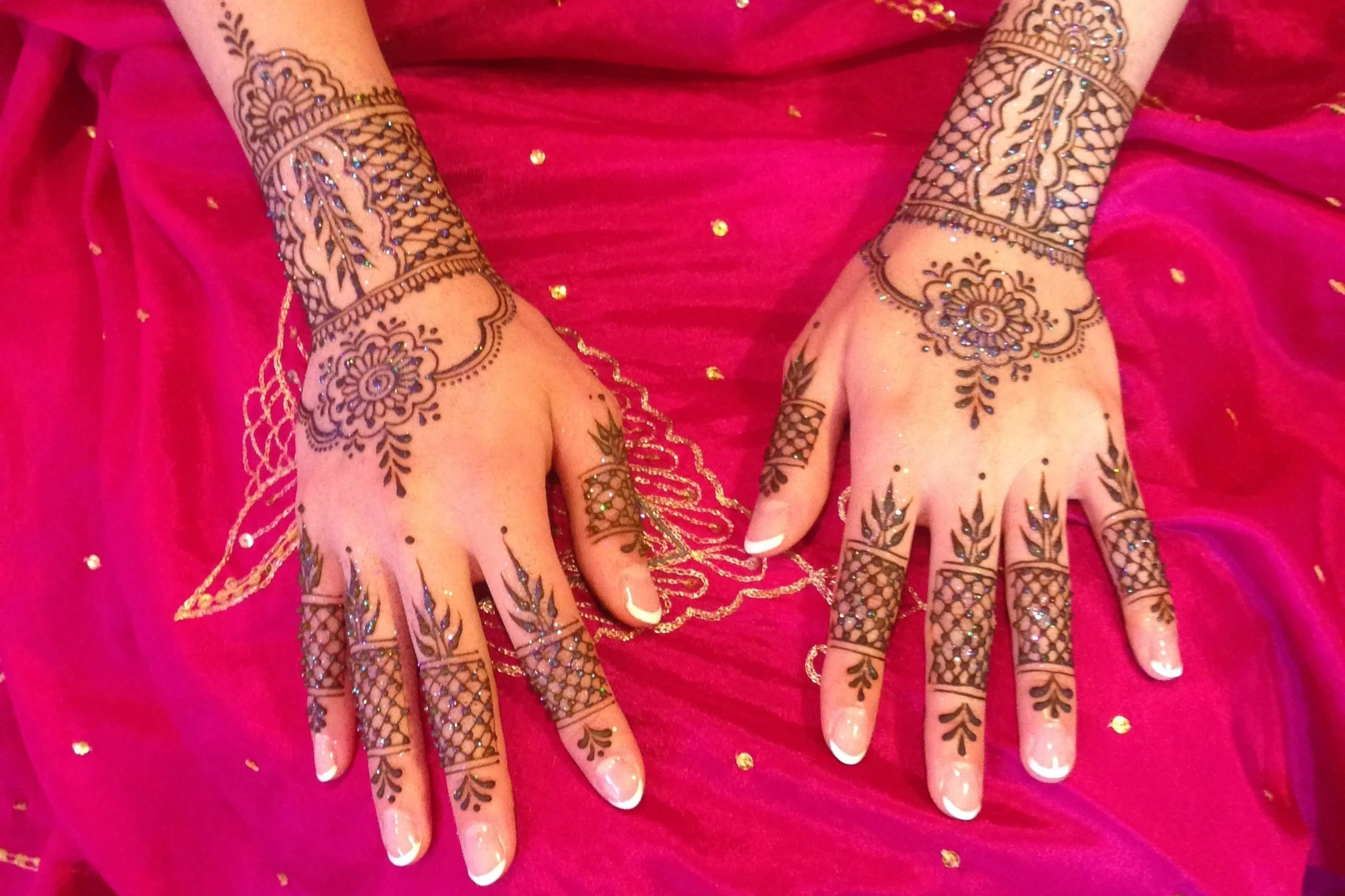What is Henna?
Henna is the common name for the plant lawsonia inermis and has been used as a natural dye for throughout history in many cultures. The henna paste is derived from the leaves of the plant which is ground to a fine powder and then mixed with various liquids to achieve the desired consistency. Henna Artists all have their own favorite mix. Most often these include lemon juice and essential oils.
Henna is known by many names such as: Henna, Heena, Mehendi, Mehandi, Mehndi and M’hendi.
Most commonly it was a ceremonial ritual, marking a Bride’s passage into womanhood for her wedding ceremony but has also been an integral part of religious and ceremonial celebrations throughout the world often associated with Childbirth, rites of passage, religious celebrations as well as spiritual offerings for victory, luck, joy, special adornment or to prepare a body for burial.
Application and After Care for Henna
When applied for Body Art, the paste should remain on the skin for at least 4 hours. Longer is better. When the paste is removed the remaining stain is a bright orange color. Over the next 24-48 hours the stain will darken as it oxidizes into a rich mahogany red. It will stay vibrant and beautiful as it gradually fades away as your skin naturally exfoliates over the next 1-3 weeks. Remember the darkening process time when booking henna for special occasions and try to give yourself a couple of days before any special events for maximum darkness in your design.
Keep the paste on for at least 4 hours; the longer the better, 12 hours is optimal.
The stain will be a light orange when the paste first comes off and will darken to its full reddish brown in 24—48 hours.
Seal the paste by gently applying a lemon and sugar mix with a cotton ball gently on the design (most often your artist will do this for you, sometimes it is not needed).
When the paste is dry, you can use medical adhesive tape to keep it secured on the skin. This will keep the paste from flaking off. This technique is especially good on areas of the skin that do not stain as dark naturally (back, belly, arms). It will also protect your bedsheets from the henna flakes. The henna can stain fabric permanently.
Stay warm! Henna Loves the heat and it helps to promote a dark stain. You can steam your henna over a kettle of tea or boiling water.
Do not wash the paste off, instead flake it off with a card, a dull knife or your fingernail. You can rub it with oil or shea/cocoa butter to help it release if needed.
It will be a bright orange at first. Your design will darken over the course of 24-48 hours to a rich beautiful red, red-brown, red burgundy. The final color depends on your skin and the henna that was used.
Avoid water for the first 24 hours. If you must shower or wash protect your henna with a natural oil like cocoa butter, shea butter or some other water barrier. Just be sure that it does not contain petroleum products or other exfoliating ingredients.
Care for your design by moisturizing with shea or cocoa butter often
black "henna" is not real henna!
NATURAL HENNA IS RED ONLY RED. Products called Black Henna are NOT natural Henna, and can contain a very toxic and sensitizing chemical called Para-phenylenediamine (PPD). When para-phenylenediamine is used to make black temporary tattoos, often called “black henna”, it can cause blistering, open sores, scarring, and lifelong health problems including Kidney and liver damage for life and has been linked to leukemia. PPD based black hair dye should never be put straight on your skin, plain, or mixed with other material. Para-phenylenediamine is a strong sensitizing, transdermal toxin and a potential carcinogen.
Henna Rising will NEVER use “Black Henna”. We guarantee that our Henna is made from all natural ingredients. Please let your henna artist aware of any allergies you may have. We will be sure to provide henna that is fresh and contains the correct essential oils for your needs.

